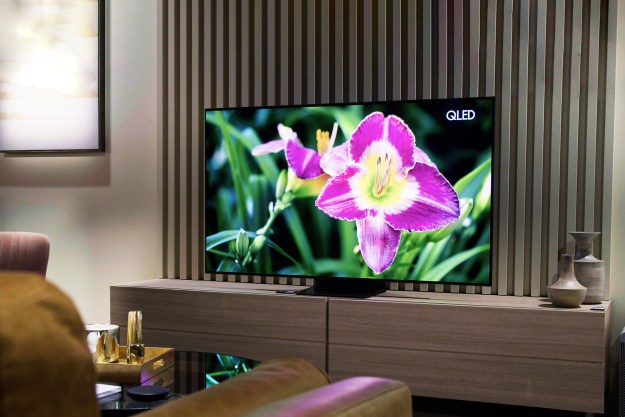“For those who dig the off-beat style of the Y-com, there are few substitutes that can create quite the same impression...”
- Unique look; solid bass; plethora of ear tips; built-in mic
- Heavy cable; no slider to adjust cable split; so-so treble
Summary
While the rest of the headphone world is following Apple with soft white designs or going stealth with seven shades of black, the quirky Danes at Aiaiai have thumbed through a pile of Dr. Suess books for inspiration and designed something different. Aiaiai worked hand-in-hand with fellow Copenhagen-based design firm Kilo Design to produce the Y-com headset, and strays from the conventional in favor of the whimsical, and includes a microphone for use with cell phones too. But does the same cool factor translate to great sound? We decided to find out.

You’ll either fall in love with the look of the Y-com, or loathe it. The pale purple cords, aquamarine accents and chunky look all threw us back to the early 1990’s, but as the popularity of retro Air Jordans and other relics of that period attest, that’s not necessarily a bad thing. Black and chrome will keep you incognito on the subway, but if you’re looking to make a fashion statement with your choice of audio equipment, the Y-Com most definitely says something. Of course, if you’re feeling less daring, Aiaiai offers them in a tamer black design, too.
The unusual thickness of the cord on these units makes these buds feel more durable than the average featherweights that come with most MP3 players, but it also makes them heavier. Aiaiai recommends looping the cords over the ear for support, which keeps them from getting yanked out of the ears by the weight, but still can’t compensate for the heavy sway of all that cable when it bounces around below. We certainly wouldn’t recommend them for running, especially because the gigantic Y splitter makes it impossible to adjust where the cables split, as you can on many other headphones with a tiny slider.
The packaging for the headphones matches the creativity of the

As a phone headset, the mic on the Y-com performs admirably, if ever-so-slightly muffled on the receiving end. And like a lot of in-ear headphones with microphones built in, talking with sealed ears makes it difficult to tell how loudly you’re talking, meaning you’ll want to pop the left ear bud out to talk.
Conclusion
For the 450 DKK price tag on the Y-com (about $82 USD), we can’t help comparing them with Klipsch’s $80 Image S4, which edges out the Danish buds on sound quality. But for those who dig the off-beat style of the Y-com, there are few substitutes that can create quite the same impression, and the mic undoubtedly makes a nice addition for cell phone music listeners, too.
Pros:
- Unique look
- Solid bass
- Plethora of ear tips
- Built-in mic
Cons:
- Heavy cable
- No slider to adjust cable split
- So-so treble
Editors' Recommendations
- Updating our Sony WF-1000XM5 review
- The best rom-coms on Hulu right now
- Edifier MP230 Hands-on Review: The pint-sized, retro Bluetooth speaker brings a vintage vibe
- Sonos Voice Control hands-off review: Now we’re talking
- All the new tech that blew our reviewers away this month


